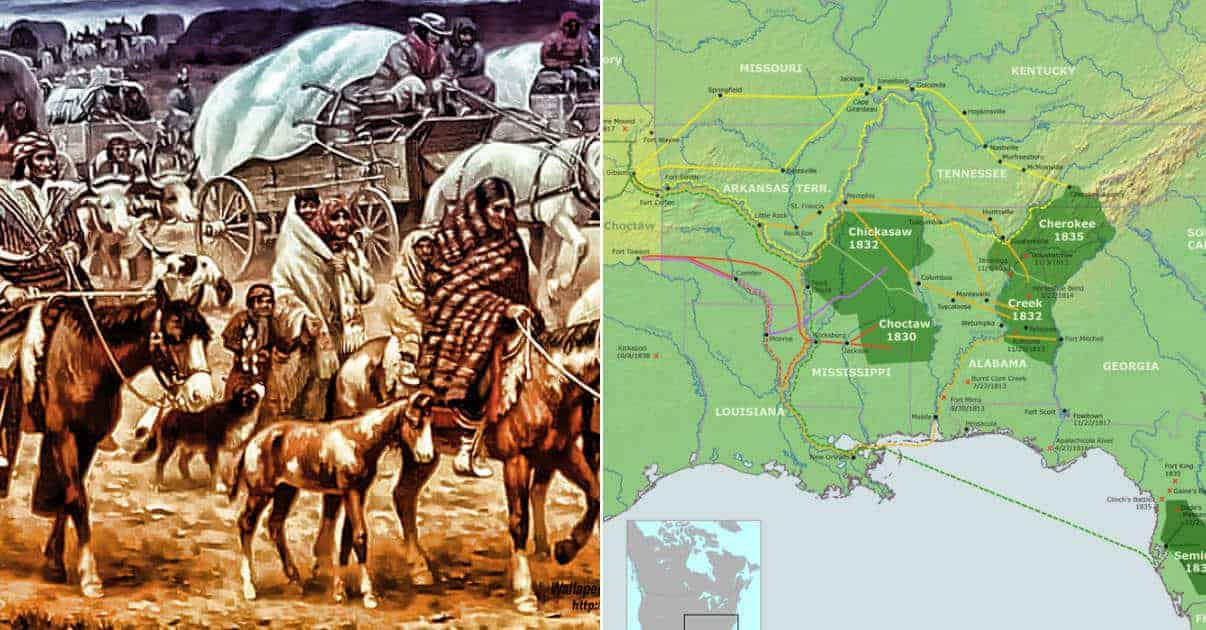
The Upper and Lower Creeks
The Creek tribes had a long history of treaties which gradually ceded their ancestral lands to the United States. The Creek tribes were branches of the Muscogee, and over the years devolved into the Lower Creek, mostly in Georgia, and the Upper Creek living in Alabama and Tennessee. The Red Sticks, which Andrew Jackson routed at the Battle of Horseshoe Bend during the war of 1812, were comprised of Upper Creek Indians led by a chief named Menawa, many of whom fled to the lands of the Seminole following the defeat. Among these was a young Creek brave named Osceola.
The War of 1812 led to many of the Lower Creek being removed to the Indian Territory, Many others, including the Red Stick leader whose English name was William McIntosh settled among the whites, assimilated into the communities and purchasing land and slaves. McIntosh was a frequent guest of Andrew Jackson at the Hermitage, where they discussed politics and their mutual interest in race horses. By 1825 the Upper Creeks were being pressured to move as well, and had ceded so much land to the whites that their tribal council imposed a death sentence for any leader who agreed to surrender Creek land.
When McIntosh ceded lands in the 1825 Treaty of Indian Springs, Menawa had him assassinated. The Governor of Georgia began using state militia to remove the Creek and when the Creek complained to Washington and asked for help retaining what was left of their lands, President John Quincy Adams refused, despite the Supreme Court having decided that Georgia’s actions were unconstitutional. With most of the Lower Creek being removed to the Indian Territory, Alabama began similar actions against the Upper Creek, with by then President Andrew Jackson refusing to intervene, for reasons similar to those of his predecessor.
In 1832 the remaining Creek lands in Alabama were divided into allotments and the Creek were offered a choice. Those who wished could sell their allotment of land and remove themselves to the Indian Territory where they could continue their traditional way of life. Those who desired to remain on their allotment had to agree to subject themselves to the authority of federal, state, and territorial laws. If they refused they would be forcibly removed to the Indian Territory. Scattered raids and warfare along the Chattahoochee River broke out among resisting Creek and Alabama militia.
Many of the Creek resisted after trying to comply with the sale of their allotments only to be cheated by speculators of both white and Indian race. Their attacks were focused on the property of the devious men who had cheated them. The federal government sent troops to support the militia and the Creek resistance was broken in 1836, just as the Seminole War was entering its most violent period. The broken Creek Nation, a group of about 15,000 men, women, and children, removed westward to the Indian Territory along their own Trail of Tears, largely following the paths taken by the Choctaw and Chickasaw. About 3,500 Creek died on the journey.

